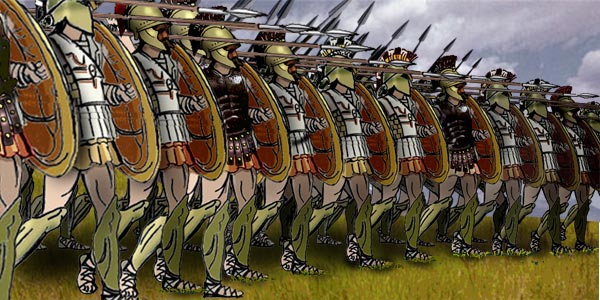In the 1960's, Walther Mischel developed a simple experiment to help gauge self-control. In the experiment, preschoolers were placed in a room with a single researcher and given a marshmallow. The researcher would then leave the room for a period of time, but before leaving, they would tell the children they could either eat the marshmallow while they were gone, or wait to eat it and receive a second marshmallow when they returned.
It was a pretty simple choice. One treat now, or two treats later.
Some of the children quickly ate the marshmallow, unable to wait any amount of time for another reward. Others, fought the urge to eat the first marshmallow and were rewarded with a second. Researches documented which of the children were able to delay gratification, and which succumbed to the tasty temptation.
Some of the children quickly ate the marshmallow, unable to wait any amount of time for another reward. Others, fought the urge to eat the first marshmallow and were rewarded with a second. Researches documented which of the children were able to delay gratification, and which succumbed to the tasty temptation.
In later studies, Mischel and his group revisited the children as teenagers to measure different areas of their lives and compare them with their results from the Marshmallow test. What they found is that the children who were able to wait for the second marshmallow were more cognitive and socially competent, performed better academically, and coped better with stress and frustration. Additionally, they were less likely to suffer from substance abuse, obesity, and were overall heather and more successful.
Even later still, another group of researchers from the University of Washington tracked down a portion of the original participants as adults and administered another series of tests measuring self-control. They found that the results of the now adults were very similar to their results as preschoolers with most of them still performing along the same lines as their preschool selves years earlier. Additionally, they also participated in an MRI scan to measure brain activity and structure. What was discovered was that the adults who exhibited higher levels of self-control displayed more activity in the prefrontal cortex, the area of the brain which controls executive functions such as impulse control, time management, planning and decision making. The participants who showed less self-control had increased activity in the ventral striatum, a region thought to help process desires and rewards.
According to these results, it would appear that some individuals are neurologically inclined to seek out immediate rewards while other are programmed to delay gratification in search of greater opportunities. Similar to how some individuals are taller and better suited for basketball, or have a more efficient cardiovascular system and make better swimmers. This also extends beyond physical attributes and into mental and psychological areas as well as some might be more likely to suffer from clinical depression or have a better ear for music.
With the massive complexity of brain matter and diverse physiological factors, it is true that some individuals are born with advantages in certain areas. Some children simply struggle to control the impulse to eat the first marshmallow more than their peers. Some people have advantages that help them learn a second language, play the guitar or shoot a basketball, others struggle with fine motor skills or memorization which makes these skills much more difficult to master.
This implies that some individuals are better wired for success from a young age.
But none of these strengths and weaknesses are set in stone. It may be more difficult for someone to learn to play an instrument, but not impossible. It simply takes more time and effort to adapt. Nor does it mean that the individual who is a has a natural talent for swinging a baseball bat will become a professional ball player. What is needed in both cases is time and effort to hone their skills, and that requires self-control.
The key to this development is differentiating between the process and the product. When making a decision, it is important to separate these two ideas. If you have a goal of maintaining a certain weight, there is a process and a product.
Eating a quart of ice cream every night after dinner is a process.
Gaining 5 pounds in a week is the product.
Running three miles every morning is a process.
Losing five pounds is the product.
Delayed gratification is the ability to choose a more beneficial product over a less enjoyable process. It is choosing between what we want to do and what we want to get. There are two primary difficulties faced when making this choice: ease and immediacy.
Eating ice cream every night is easier than running every morning. It gives more immediate positive results. Eating ice cream now is better than running now. Gaining five pounds is less desirable than losing five pounds, and not immediately noticed. The contradiction of choice is apparent, but in the moment it is difficult not to make the a decision based on immediacy and ease.
In psychology, the Construal-Level Theory of Psychological Distance is based on how we view time and our relationship with it. One area of the theory revolves around motivation, and how levels of motivations increase with the decrease of distance in space and time. In layman's terms, the closer something is, or the sooner it is, the more important it is. This is the framework of procrastination. Human beings are more motivated by something that gets immediate results or is in response to an immediate need. One marshmallow now is better than two marshmallows later. According to this model, it is not the one or two which is the deciding factor, it is the now or later. It is how we are wired from birth.
The ability to manage time, weigh out risks, delay gratification are all processes that are controlled in the prefrontal cortex and fall under the umbrella of executive functions of the brain. It is what creates our ability to weigh out and place values on the one and the two in conjunction with the now and the later as opposed to being superseded by it. Self-discipline is facilitated by an increase in brain matter and usage within the prefrontal cortex and is partially influenced by its structural size. It has a naturally occurring development over time, as well as a genetic predisposition that makes it easier for some individuals to make decisions based on the product instead of the process, to choose long term goals over short term pleasures, and it comes more naturally to some than others.
The danger is assuming that these are inescapable facets that cannot be overcome, developed, or increased over time, that this a structural or genetic identity which is permanent and not something that can change. This concept of growth mindset has been championed over recent years by Carol Dweck and explained in depth in her book, Mindset: The New Psychology of Success. This idea of improving intelligence, skill, or capability from a learner's standpoint as been a shift in the ideology that many people hold about a single person's ability to change, the belief that our skills, intelligence or even beliefs are static.
Taking this a growth a step further, it is not just about mindset or belief, but it is a physical growth that occurs within the brain itself. Neural Plasticity, the capacity for the brain to modify itself functionally and structurally has also been gaining support and attention the areas of science, education, and psychology. One of the more stunning pieces of evidence to support this idea is contained within the brain's of London's taxi cab drivers.
In order to become a licensed cabby in London, a driver must pass a knowledge test of the roughly 25,000 streets, avenues and alleys, as well as 20,000 landmarks, businesses, clubs, hospitals, and points of interest where someone might want to go. what makes it even more challenging is the nature of the streets, directions and placements of roads in London as it has been growing organically over hundreds of years and not built on a planned geometrical grid system with easy to follow patterns. It is a sprawling mess on interconnected veins that make up the beating heart of England. It takes most candidates two to four years to study for and pass the test, and only about one if five who attempt the test actually pass it, despite the fact that it can be taken as many times as you like.
In a series of studies performed by neuroscientists, it was discovered that London taxi cab drivers had more gray matter in their posterior hippocampi, an area associated with spatial awareness. It would seem that those who passed the test already had brain structures better suited for memorizing locations. But, in later studies performed on applicants preparing for the tests, it was shown that brain development occurred while they were working towards memorization. MRI scans showed definite growth in the hippocampus that was not present before they began the process of preparation for the test. Additional tests showed that those who experienced this development also performed better on memory tests no associated with the streets of London than those who had not prepared for this test. Not only did they knowledge base increase, but their cognitive functions as well.
This type of growth and development can be seen in other areas as well. Jugglers demonstrate growth in the parietal lobe which helps process information involving how we track objects and move. Piano players show increases in areas required for auditory processing and motor skills. Science supports the theory that our brain adapts structurally to meet the requirements of the work we choose to do. That is the neurological principal of learning and growth. Improved cognitive function is a product; practice, work and repetition are the process.
Metaphorically, someone who is six feet tall can quickly reach an item on an upper shelf, because they have a physical advantage to complete that task. Someone who is five feet tall takes more time, as they have to change the structure and take the time and effort to locate and introduce a step ladder. Some children cannot resist the urge to eat the first marshmallow because it actually is more difficult for them. That does not mean that they will always make that choice nor does it mean they are destined for failure, but, they will have to work harder for that second marshmallow.






